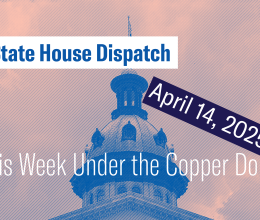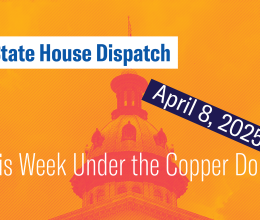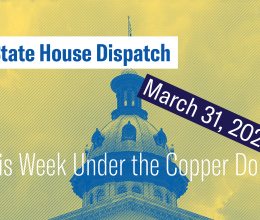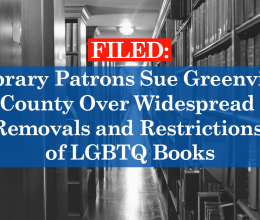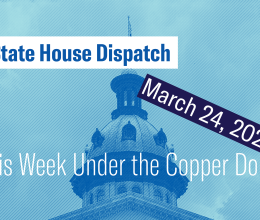
Every now and then, a court case comes along that reminds us of the courage and foresight of Black political leaders in South Carolina’s 1868 Reconstruction legislature.
Our legal team recently filed a “friend of the court” brief in Osmundson v. School District 5 of Lexington and Richland Counties, a case that deals with access to public records.
The case involves Paul Osmundson, a local news editor for The State newspaper. He filed a request for public records from a Columbia-area school district and sued when the district withheld the records.
The South Carolina Freedom of Information Act (SC FOIA) requires a chief administrative judge to schedule a hearing within 10 days of such a lawsuit, but in this case, the judge failed to schedule the hearing in time. As a result of that failure, the judge dismissed the case — despite the fact that Osmundson had no power to set a hearing or force the court to take action.
We argue in our brief that, because of the court’s failure to set a hearing, Osmundson has been denied his constitutional right to a remedy at law. We specifically cite the Remedy Clause, a line from the South Carolina Constitution, Article 1, Section 9:
“All courts shall be public, and every person shall have speedy remedy therein for wrongs sustained.”
Why do we have this law, and why were we able to make this argument? In our brief, staff attorney Meredith McPhail takes things all the way back to the 19th century.
Following the Civil War and a short-lived 1865 constitution, the state held a convention in 1868 in Charleston to write a new state constitution with expanded rights and guarantees for all.
The stakes were high. Shortly after Black South Carolinians had won the right to vote, the state’s fragile democracy and public institutions were already under attack by those who wanted to drag the state back to the rule of the plantation class. The state had passed heavily restrictive Black Codes to regulate the lives of formerly enslaved people, and former Confederate leaders were being sent to Congress.
Similar constitutional conventions were held all over the South around this time, but South Carolina’s was considered especially forward-thinking (by its supporters) and radical (by its detractors). For starters, South Carolina was one of two states, along with Louisiana, where Black citizens made up the majority of delegates to the constitutional convention. The delegate list included some of South Carolina’s leading intellectual, spiritual, and political minds, among them founding members of the South Carolina Republican Party.
From the Beaufort District came Robert Smalls, whose daring escape from slavery with his family on a commandeered Confederate steamship was already the stuff of legend. From the Georgetown delegation came Joseph H. Rainey, soon to become the first Black member of the U.S. House of Representatives. From Charleston came Richard H. Cain, the abolitionist minister and newspaperman who served as pastor of Emanuel AME. The list went on and on.
Together, they wrote a new constitution that abolished debtors’ prisons, granted women the right to a divorce, established a popular vote for the governor’s office, and removed property ownership as a prerequisite for holding elected office. The new constitution also established a public school system that would be “free and open to all the children and youths of the State, without regard to race or color.”
In writing a new constitution, the convention delegates sought to shore up public institutions and ensure they would be open and fair to all. In Article I, Section 9, the 1868 Constitution introduced what is now commonly known as a Remedy Clause. It remains in our constitution to this day, and it has only been revised to expand its protections.
The Remedy Clause’s requirement that courts be public, speedy, and available to all is fundamental today. And while similar clauses exist in many state constitutions, there is still no counterpart in the U.S. Constitution. These were the same standards we appealed to in Osmundson, 155 years later.
While we don’t represent a party in this case, we are proud to weigh in on the side of the public’s right to know and individual citizens’ right to a remedy in the courts. Without the words and actions of Black Republicans — the radicals, the intellectuals, the freedom fighters — we wouldn’t have those rights to defend today.
You can read more about Osmundson and what it means for the South Carolina Freedom of Information Act on our Cases page. For a deeper dive on the 1868 South Carolina Constitutional Convention and what it means for our rights today, check out Episode 55 of the Charleston Time Machine podcast.

